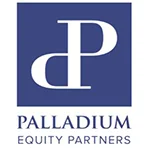 Mandy Arnold |
Through our experience guiding clients and managing our own acquisition of TFM Advertising last year, we’ve had the opportunity to see first-hand the nuances of organizational change. M&A can often bring complicated change and culture clashes, and companies have failed by ignoring opportunities to be proactive in their communications. Part of navigating landmines is seizing the opportunity: with the right approach, you can come out at a true advantage with added brand equity.
It’s easy to focus too much on the potential sales advantages of the newly forged relationship, rather than how you’ll manage all the changes leading into the merger or acquisition — especially because the process of M&A can move at varying speeds. Some go awry due to blatant lack of planning, missed communications or assumptions that information or opinions won’t matter in the big picture.
When a company misses an opportunity to reinforce its commitment or fails to recognize the value of a particular audience, the misstep can greatly affect morale, pride, trust and acceptance of the benefits to be gained in the changes ahead.
No matter the size of a merger or acquisition, your communications team should be given a seat at the table. Ideally, communications should be on the agenda from the start of the discussions. Any good business advisor will tell you that culture and operational processes are two layers that can break a deal. The same goes for your public relations and communications strategy.
Where do you begin? It starts with an effort that reinforces trust and respect from the beginning. M&A communications should be broken down into four phases:
• Planning for the announcement.
• Internal announcement.
• Public announcement.
• Post-announcement.
Invest time to understand your audiences
As you develop an approach for each phase, you’ll want a clear assessment of each segment of your audience. In my time overseeing communications strategies, I’ve seen many executives dismiss the need to invest the time and energy to address each audience and their needs through the change.
By investing the time into a plan and effectively implementing that plan by communicating with everyone — and by paying attention to their concerns and questions — you build a stronger team and brand trust in the process.
We typically break down audiences as follows: executives, senior/middle management, employees, clients, vendors, referral sources, strategic partners, external influencers such as legislators and community leaders, stakeholders/stockholders/donors/contributors, potential clients, past clients and the general public.
To assess each audience’s voice in order to understand how to prepare, here are a few questions I’ve found that companies may not think to ask as you build an effective strategy.
What is the client’s relationship with the executive team currently in place?
Is there an opportunity to gain past clients through this change? (Will this change address a past weakness?)
Are executives and staff clear on the proper language of merger versus acquisition and the importance of not confusing them?
What are all the touchpoints to be considered with the update in communications?
How could a leak prior to the public announcement affect sales and morale?
Who should be treated like a VIP in the communications process?
Who can help you mitigate risk through third-party messaging?
Prioritize your communications
Prioritizing the timing of who you communicate with — and when — will allow you to build and maximize the potential in a relationship, and mitigate risk through proactive messaging.
An example of this would be a merger we managed that was expected to result in an office relocation, at a time when the community was struggling with recruiting and retaining businesses and jobs. By reaching out in advance to local government officials, including economic agencies and the local chamber, we were able to get in front of the issue and work with them on a consistent, clear message: That, although one of the offices might be consolidated to a new location, no jobs were leaving the region — and, in fact, the company projected job growth over the next 5 years. Eliminating the opportunity for people to fill a void of information with assumptions or falsehoods helped to build momentum through the change ahead.
Don’t ignore opportunities to build internal buy-in
Some M&A are not large enough to capture the attention of media, but that doesn’t mean you should underestimate attention to planning. We recently oversaw communication of a smaller acquisition. Through our evaluation of audiences, we realized an opportunity to maximize how the acquired team merged successfully into the new company. We facilitated conversations with employees on the frontlines in advance of the news going public, working to help them understand critical messages and added services and to answer anticipated questions.
As part of the process, we also recommended that there be a familiarizing tour of their new home with the acquiring firm to meet the team, see where their desks would be located and where to park. This effort went a long way — you’d be surprised how many employees just want to know what their new office is going to be like. Employees were able to let go of disruptive anxiety, and instead focus on how to leverage the change to grow sales with current and past clients.
In the process, we also discovered that the acquisition would eliminate the need to refer out services that the acquired company formerly could not fulfill, as the new owner brought a deeper offering. This created a chance to re-engage past clients and get current clients excited about improved services.
Expect the unexpected
Not everything goes smoothly in M&A communications. We’ve dealt with leaks, misinformation, layoffs, price increases and more. But, having a proactive plan in place for any scenario allows the executives and employees to move faster through any challenge.
In the end, M&A can look a lot of different ways, and each has its nuances that require special attention. Never underestimate how the flow of information can affect your brand equity and trust, and don’t miss the opportunity for greater gains by communicating through change — both internally and externally.
***
Mandy Arnold is the CEO of Gavin, a digitally minded public relations and marketing agency based in York and Harrisburg, Pennsylvania.


 Spectrum Science acquires clinical trial recruitment and engagement solutions provider Continuum Clinical.
Spectrum Science acquires clinical trial recruitment and engagement solutions provider Continuum Clinical. How PR agency owners can navigate the M&A process in a way that yields a rewarding experience for both owners and the teams they leave behind.
How PR agency owners can navigate the M&A process in a way that yields a rewarding experience for both owners and the teams they leave behind. Ten potential ways an agency sale can positively benefit team members and employees.
Ten potential ways an agency sale can positively benefit team members and employees. Kekst CNC reps Palladium Equity Partners and its joint venture affiliate, Palladium Heritage, on the acquisition of National Auto Parts, USA;, NAP San Diego; and National Auto Parts-Oakland to form Collision Auto Parts, a platform serving customers in the automotive aftermarket collision repair sector.
Kekst CNC reps Palladium Equity Partners and its joint venture affiliate, Palladium Heritage, on the acquisition of National Auto Parts, USA;, NAP San Diego; and National Auto Parts-Oakland to form Collision Auto Parts, a platform serving customers in the automotive aftermarket collision repair sector. ICR has acquired Bullfrog + Baum, the 23-year-old PR shop focused on the hospitality, lifestyle, travel and consumer marketing sectors.
ICR has acquired Bullfrog + Baum, the 23-year-old PR shop focused on the hospitality, lifestyle, travel and consumer marketing sectors.


 Have a comment? Send it to
Have a comment? Send it to 
No comments have been submitted for this story yet.